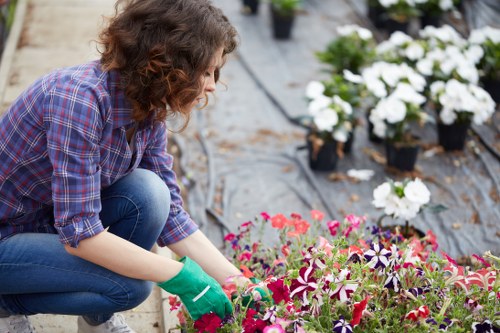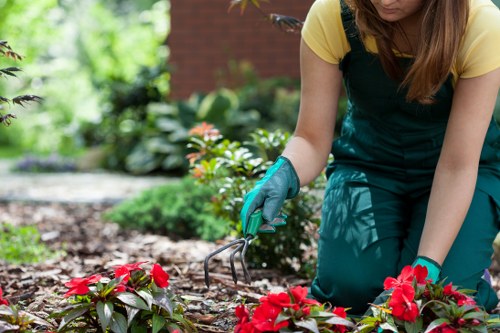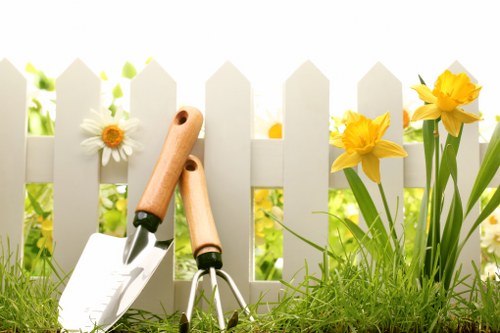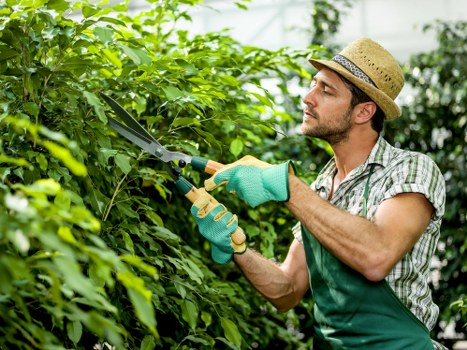Garden Maintenance in Violet Gardens
Introduction to Garden Maintenance

Garden maintenance is essential for ensuring that your outdoor space remains beautiful and healthy throughout the year. In Violet Gardens, where the climate and soil conditions offer unique challenges and opportunities, regular upkeep can transform your garden into a vibrant oasis.
Proper maintenance not only enhances the aesthetic appeal but also promotes the longevity of your plants, reduces the risk of diseases, and ensures a safe environment for your family and pets.
In this article, we will explore various aspects of garden maintenance tailored specifically for Violet Gardens, providing you with actionable tips and best practices.
Seasonal Maintenance Tasks

Maintaining a garden in Violet Gardens requires attention to seasonal changes. Each season brings its own set of tasks that are crucial for the health and beauty of your garden.
Spring: Focus on planting new flowers, pruning trees, and preparing the soil.
Summer: Ensure proper irrigation, control pests, and deadhead flowers to encourage continuous blooming.
Choosing the Right Plants

Selecting plants that thrive in the specific climate of Violet Gardens is fundamental. Opt for native species that are adapted to the local soil and weather conditions, as they require less maintenance and are more resistant to pests.
Consider incorporating a mix of perennials and annuals to maintain year-round interest and ensure a diverse and resilient garden ecosystem.
Tips for choosing plants:
- Research native plants suited to Violet Gardens.
- Choose plants with varying heights and colors for visual appeal.
- Ensure proper spacing to allow for growth and air circulation.
Pest and Disease Control

Effective pest and disease management is crucial in maintaining a healthy garden. In Violet Gardens, common pests include aphids, caterpillars, and mites, while diseases may range from fungal infections to bacterial blights.
Implement integrated pest management (IPM) strategies that combine biological, cultural, and chemical controls to minimize the impact on beneficial insects and the environment.
Steps for pest control:
- Identify the pest or disease accurately.
- Monitor garden regularly to detect issues early.
- Apply appropriate treatments, focusing on eco-friendly options.
Lawn Care Essentials

A well-maintained lawn is the cornerstone of any beautiful garden. In Violet Gardens, proper lawn care involves regular mowing, fertilizing, and aerating to promote healthy grass growth.
Ensure that your lawn receives adequate water, especially during dry spells, and address any signs of weed infestation promptly to maintain its lush appearance.
Best practices for lawn care:
- Mow the grass at the recommended height for your specific type.
- Fertilize during the growing season to provide necessary nutrients.
- Aerate the soil annually to improve air and water penetration.
Irrigation Systems

An efficient irrigation system is vital for sustaining a healthy garden in Violet Gardens. Automated systems can help ensure that plants receive consistent moisture, reducing the risk of overwatering or underwatering.
Consider installing drip irrigation or soaker hoses to minimize water waste and deliver moisture directly to the plant roots where it's needed most.
Benefits of automated irrigation:
- Reduces water consumption.
- Minimizes labor and time spent on manual watering.
- Ensures even distribution of water across the garden.
Pruning and Trimming Techniques

Regular pruning and trimming are essential for maintaining the shape and health of your plants. In Violet Gardens, proper pruning techniques can enhance plant growth, encourage blooming, and prevent the spread of diseases.
Use sharp, clean tools to make precise cuts, and remove any dead or diseased branches promptly to maintain the overall structure of your garden.
Pruning tips:
- Prune during the dormant season for most plants.
- Remove no more than 25% of the plant's foliage at a time.
- Focus on improving air circulation and sunlight exposure.
Soil Health and Fertilization

Healthy soil is the foundation of a thriving garden. In Violet Gardens, regular soil testing can help determine the nutrient needs of your plants and guide your fertilization strategy.
Incorporate organic matter such as compost or manure to enrich the soil, improve its texture, and enhance its ability to retain moisture and nutrients.
Maintaining soil health:
- Conduct soil tests annually to assess pH and nutrient levels.
- Add organic amendments to improve soil structure.
- Rotate crops and avoid planting the same species in the same area repeatedly.
Mulching for Moisture and Weed Control

Mulching is an effective technique for conserving soil moisture, suppressing weeds, and regulating soil temperature in your Violet Gardens garden.
Choose organic mulches like bark, straw, or compost, which also contribute to soil fertility as they decompose over time.
Advantages of mulching:
- Reduces water evaporation from the soil.
- Minimizes weed growth by blocking sunlight.
- Enhances the appearance of garden beds.
Integrated Pest Management (IPM)

Implementing an Integrated Pest Management (IPM) strategy is crucial for sustainable garden maintenance in Violet Gardens. IPM emphasizes the use of environmentally friendly methods to control pests and diseases.
By combining biological controls, cultural practices, and targeted chemical treatments, you can effectively manage pest populations while minimizing harm to beneficial insects and the ecosystem.
Key components of IPM:
- Regular monitoring and accurate identification of pests.
- Utilization of natural predators like ladybugs and lacewings.
- Application of least-toxic pesticides when necessary.
Conclusion and Call to Action

Maintaining a beautiful and healthy garden in Violet Gardens requires dedication, knowledge, and the right set of practices. By following the guidelines outlined above, you can create a stunning outdoor space that thrives year-round.
Whether you're a seasoned gardener or just starting out, investing time in regular garden maintenance will pay off with vibrant blooms, lush lawns, and a serene environment.
Ready to transform your garden? Contact us today to schedule a consultation or book your service now and take the first step towards a more beautiful garden.



